New Lab for Testing Possibilities of Net-Zero Energy Homes
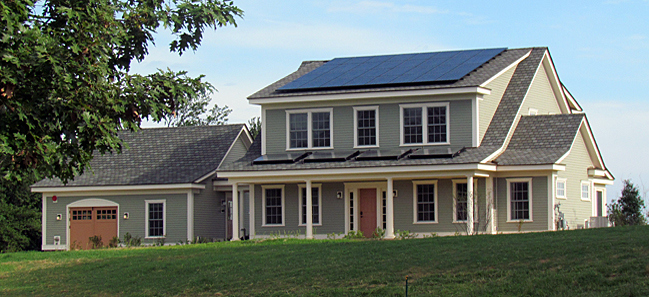
It looks a lot like many other suburban homes. It’s even located in a popular suburban area – Gaithersburg, Maryland, just north of Washington, D.C. But it’s really a Recovery-funded laboratory, built specifically to allow researchers to test various high-efficiency and alternative energy systems, materials, and designs that would produce all the energy a residential home would need every day.
Officially called the Net-Zero Residential Test Facility, the recently completed lab will be home to researchers from the Commerce Department’s National Institute of Standards and Technology. Over the course of a year the researchers, simulating a family of four, will test and demonstrate whether a net-zero energy home can fit in just about any neighborhood.
Approximately $2.5 million of Recovery funds paid for construction of the lab, which includes three types of geothermal systems so they can be evaluated in the same climate and soil types, and multiple ducting systems. Elaborate safety systems are also included, as they would be in any other lab.
The goal is to identify existing and new energy technologies that work best and most affordably in a home-environment.
Lincoln Memorial Reflecting Pool Reopens After Recovery Work
After nearly two years of renovation and rehabilitation, the Lincoln Memorial Reflecting Pool reopened at the end of August.
Popular among the approximately 25 million people who visit the National Mall each year, the Reflecting Pool has also been the site of historic events, perhaps most notably involving civil rights. Martin Luther King Jr. delivered his “I Have a Dream” speech while overlooking the Reflecting Pool in 1963. And the famed contralto Marian Anderson, barred from singing at Constitution Hall in 1939 because she was African-American, held a widely attended outdoor concert on Easter Sunday that year by the Reflecting Pool.
Built in the 1920s, the pool had begun to crack and leak – at one point losing as many as 500,000 gallons of water a week. Lacking a circulation system, the 6.75-million-gallon pool also required draining, cleaning, and refilling twice every year.
The Department of the Interior (DOI) used $34 million of Recovery funding to repair and upgrade the Reflecting Pool and also install a circulation system. DOI officials note that the 580 granite stones that had been originally placed along the edges of the pool in the 1920s were catalogued and put back into place.
More Soldiers, Bigger Hospital
Workers are one year into constructing an Army hospital to replace an aging facility that was never intended to handle as many patients as it does today.
The Carl R. Darnall Army Medical Center, slated for a 2015 opening at Fort Hood in Texas, is both the largest Pentagon contract funded by the Recovery Act – $530 million – and the largest medical facility project in the military.
The original Darnall hospital opened in 1965 to serve 17,000 soldiers; an addition in 1984 expanded capacity to 39,000 troops. Today, the hospital serves roughly 45,000 soldiers as well as nearly 125,000 family members and retirees within a 40-mile radius.
The new medical center will be nearly 60 percent larger than the current facility and will include a six-story hospital, three out-patient clinic buildings, and three parking garages.
Balfour Beatty/McCarthy, based in Dallas, designed and is building the medical center.

Demolishing old building to make way for new medical center, left; drilling for placement of massive, concrete piers for foundation.

Artist’s drawing of lobby of new Carl R. Darnall Army Medical Center.
Project Spotlight – Reconstruction of Water Pumping Stations
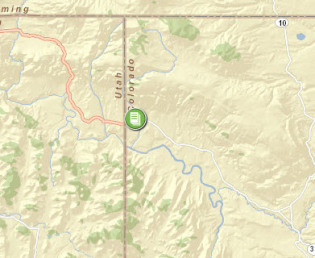 Recipient: Patrick Albin Carlson Joint Venture, LLC
Recipient: Patrick Albin Carlson Joint Venture, LLC
Award Amount: $920,932
The recipient reported that these Recovery funds would be used to:
Provide all materials, equipment, some minor design, and labor required to completely reconstruct four permanent water pumping stations. These stations, which are used for wetland habitat management, are located on the Green River in Browns Park National Wildlife Refuge, Colorado.
Project Status: Completed. Construction began on 6/8/2010 and was reported complete as of 12/31/10.
To see how funds were distributed between the project’s prime and sub recipients and to learn more about the project, check out the Award Summary or enter your zip code to find Recovery projects near you.
Project Spotlight – Route 104 Improvements
 Recipient: Executive Office of the Virgin Islands
Recipient: Executive Office of the Virgin Islands
Award Amount: $4,782,469
The recipient reported that these Recovery funds would be used to:
- Repave over 2 miles of asphalt roadway;
- Replace culverts and pipes along the roadway to prevent flooding;
- Install pedestrian signage and new road signs;
- And paint new yellow and white pavement striping.
Project Status: More than 50% complete
To see how funds were distributed between the project’s prime and sub recipients and to learn more about the project, check out the Award Summary or enter your zip code to find Recovery projects near you.
Recovery Funded Research Yields Clues to Better Hip Replacements
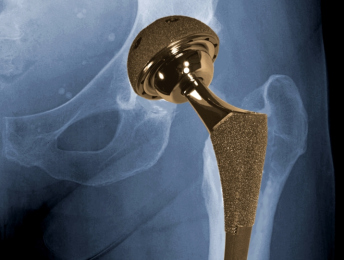
X-ray of the hip region with a metal-on-metal implant superimposed.
Results of a new study made possible by a Recovery Act grant may lead to longer-lasting hip implants.
Scientists had previously believed that naturally occurring proteins in the human body formed a lubricating layer on metal-on-metal hip implants. But a study conducted by an interdisciplinary team of physicians and engineers from the United States and Germany found that, in fact, the layer is composed of graphite carbon, and it works similarly to how a lubricant in a combustion engine does.
It’s still not clear what produces the graphite carbon in the body. But doctors and engineers working at Rush University Medical Center in Chicago and the University of Duisburg-Essen in Germany are confident that the results of the study, funded by a $670,000 Recovery grant from the National Institute of Arthritis and Musculoskeletal and Skin Diseases (NIAMS), may lead to longer-lasting hip implants.
“This finding opens new avenues of investigation to help scientists understand how joint implants function, and to develop strategies to make them function better,” said NIAMS Director Stephen I. Katz.
Typically, hip implants last 10 years or so. Younger patients tend to need to undergo a second implant surgery when the first wears out so more durable implants would reduce the need for second surgeries.
New Hospital to Start Serving Native Americans
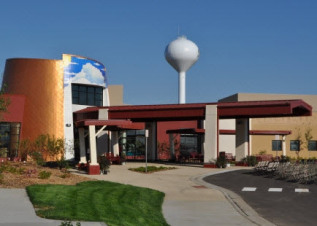
Cheyenne River Health Center, a Recovery funded project in South Dakota’s Indian Country.
On January 17, a newly built Indian Health Service (IHS) hospital began taking patients from the 9,300 Native Americans residing in the counties of Dewey, Haakon, Meade, Potter, Sully, and Ziebach in South Dakota.
The Cheyenne River Health Center, located in the north-central part of the state, was constructed using $84.5 million in Recovery funds from the Department of Health and Human Services (HHS). The 138,000-square-foot facility replaces the former Eagle Butte IHS Hospital, which had become too small to serve the needs of the community.
IHS describes the new hospital as “a modern, technologically advanced facility with enough space and staff to provide an expanded level of health care services specifically designed to meet the needs of the Cheyenne River population.”
The Recovery Act provided a total $500 million through HHS/IHS for:
- Construction of priority health care facilities
- Maintenance and improvement of buildings
- Undertaking water and wastewater sanitation projects
- Purchase of critical medical equipment and health information technology
Project Spotlight – Project Endeavor
 Recipient: Communication Service for the Deaf, Inc.
Recipient: Communication Service for the Deaf, Inc.
Award Amount: $14,988,657
The recipient reported that these Recovery funds would be used to:
- Provide subsidized broadband access for up to 16,000 low income deaf/hard of hearing individuals;
- Provide notebook computers or other connecting devices for up to 45,000 eligible individuals to assist them in accessing broadband services;
- And provide web-based contact center training and support services in English and American Sign Language. This training will focus on understanding broadband technology, web-based video communication services and accessing commercial, social and vocational support services on the internet.
As of October, 2010, the recipient reported they have completed the programming, equipment installation and training for a fully operational call center that can handle voice, video and web-based customer support calls. The recipient has launched a website to support Project Endeavor, which contains program information, training videos, and a map depicting locations of public access videophones across the country.
Project Status: Less than 50% complete
To see how funds were distributed between the project’s prime and sub recipients and to learn more about the project, check out the Award Summary or enter your zip code to find Recovery projects near you.
Nine Million Smart Meters Installed Nationwide

Worker for NV Energy installing a smart meter - Photo courtesy of NV Energy
As part of the Department of Energy’s Recovery-funded efforts to accelerate the modernization of the country’s electric grid, approximately 9 million smart meters have already been installed in homes and businesses nationwide. Ultimately, DOE’s goal is to have 15.5 million installed.
Smart meters are available at no charge to home or business owners through participating utility companies except in states where a small Public Utility Commission-mandated fee applies. Contact your electricity provider for details.
Smart meters give consumers access to near real-time information about their energy consumption, allowing them to make better-informed decisions about their use of electricity. The meters also provide utility companies with greater information about how much electricity is being used. Smart meters are just one among many advanced technologies used by utilities to sense, monitor, control and automate the distribution of electricity, collect and exchange usage information with customers, manage power loads more efficiently and reduce cost.
While smart meters have been deployed in every state, nearly 90 percent of those installed to date are in Florida, Texas, California, Idaho, Arizona, Oklahoma, Michigan, and Nevada.
For more information about DOE’s smart grid activities visit the Smart Grid Website.
Nation’s First Hybrid Electric Street Sweepers
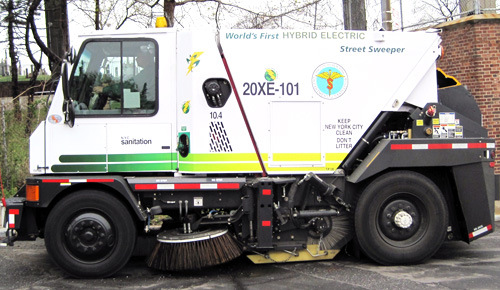
One of five new hybrid electric street sweepers bought with Recovery funds by New York City Department of Sanitation.
The first hybrid electric street sweepers in the nation are hitting the streets of Manhattan thanks to $690,000 of Recovery funding. Initiating a pilot program, a total of five of the new vehicles were delivered to the New York City Department of Sanitation this past fall.
Officials are expecting significant energy and environmental benefits:
- Standard sweeper burns 7,500 gallons of diesel fuel annually; hybrid uses about 5,000
- Fuel savings will total about $33,750 annually
- Carbon dioxide emissions will drop by 100 metric tons every year
City officials say that lessons learned from the pilot will help inform future street sweeper purchases and serve as a model for other jurisdictions around the country.





4 comments